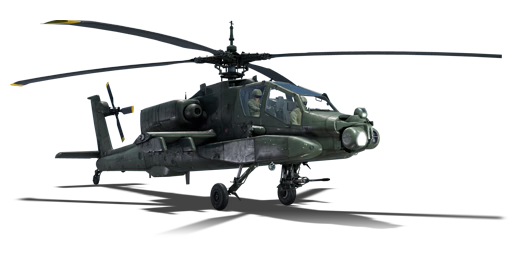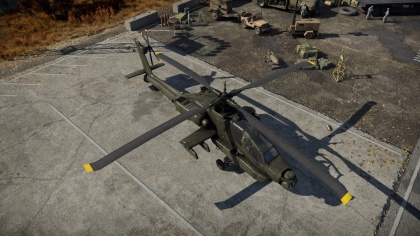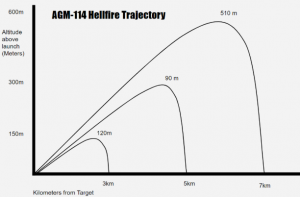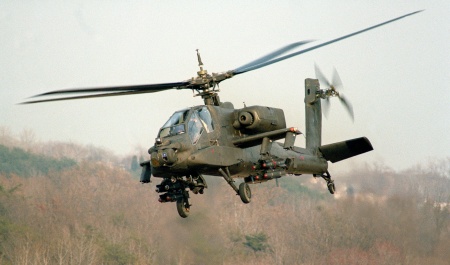Difference between revisions of "AH-64A"
(→Modules) (Tag: Visual edit) |
(→History) (Tag: Visual edit) |
||
| Line 158: | Line 158: | ||
== History == | == History == | ||
| − | + | <!-- Describe the history of the creation and combat usage of the helicopter in more detail than in the introduction. If the historical reference turns out to be too long, take it to a separate article, taking a link to the article about the vehicle and adding a block "/History" (example: https://wiki.warthunder.com/(Vehicle-name)/History) and add a link to it here using the main template. Be sure to reference text and sources by using <ref></ref>, as well as adding them at the end of the article with <references />. This section may also include the vehicle's dev blog entry (if applicable) and the in-game encyclopedia description (under === In-game description ===, also if applicable). --> | |
| − | + | The AH-64A Apache is the first variant of the famed AH-64 Apache attack helicopter. Designed by Hughes Aircraft, the AH-64 was built as a competitor in the US Army Advanced Attack Helicopter Competition, which it ultimately won. The Apache saw a variety of service in roles such as tank-killing and close air support, using a wide variety of munitions including [[AGM-114B Hellfire|Hellfire]] air-to-surface missiles and [[Hydra-70]] unguided rockets. The AH-64A has been replaced by the [[AH-64D]] Apache Longbow, which benefits from improved combat capabilities.<ref name=":0">Editors of Vertipedia. (2020)</ref><ref name=":1">Pike, J. (2000)</ref> | |
| − | + | === Design and development === | |
| + | [[File:YAH-64.jpg|thumb|450x450px|YAH-64A Prototype in 1982.]] | ||
| + | The AH-64 was first conceived of in the early 1970s as a durable, capable advanced attack helicopter to succeed the Bell [[AH-1 (Family)|AH-1]] Cobra. The helicopter was designed for the Advanced Attack Helicopter competition, a United States army tender for a new helicopter. After reviewing proposals, the army decided to allow only two bidders; Hughe’s YAH-64 and Bell’s YAH-63.<ref name=":0" /> The YAH-64 was selected as the winner, as it was deemed to be slightly more durable. As a result, the US Army decided to order pre-production models. However, the actual pre-production took much longer than expected. Though the YAH-64 prototype first flew in 1975 and received a production order in 1976,<ref name=":0" /> the selection of weapons and avionics tenders took an additional six years. Nevertheless, the Army approved a full production contract in 1982. | ||
| − | + | The YAH-64 was equipped with a tandem cockpit for the crew of two, a gunner/co-pilot and the pilot. The helicopter is powered by a single General Electric turboshaft driving a four-bladed propeller, allowing speeds of up to 296 kph.<ref name=":0" /> The landing gear is mounted in a tail-dragger configuration and cannot be retracted. The helicopter is armed with a single 30 mm M230 chain gun, as well as wing hardpoints for various underwing ordnance options including Hellfire ATGMs and Hydra-70 rockets.<ref name=":0" /> | |
| + | |||
| + | === Operational history === | ||
| + | The AH-64A began entering service in 1982, following the completion of the Advanced Attack Helicopter program. Full-scale production was started by 1983.<ref name=":1" /> The helicopter went on to serve in a variety of conflicts, and distinguished itself as a highly capable ground attacker and air support vehicle. The Apache participated in both Operation Restore Hope and Desert Storm, as well as the 1989 action in Panama, where its advanced sensor capabilities proved to be valuable in night-time raids.{2} During Operation Desert Storm, Apache helicopters were responsible for destroying over 500 enemy armoured vehicles; they performed just as well during the liberation of Kuwait, destroying 245 enemy vehicles without any losses.<ref name=":1" /> | ||
| + | |||
| + | The Apache was later fielded in the Middle East as well as in Bosnia, where it’s enjoyed continuous success. As well, it has been exported to many international customers, including Egypt, Greece, Israel, Saudi Arabia and the United Arab Emirates.<ref name=":1" /> In total, McDonnell Douglas, who purchased Hughes aircraft in 1984, delivered 937 AH-64A model Apaches: 821 to the United States, and 116 to international customers.<ref name=":1" /> | ||
| + | |||
| + | In the 1990s, the AH-64D Apache Longbow began to enter service. It was designed as an advanced version of the Apache, carrying a prolific over-the-rotor fire control radar and the ability to mount fire-and-forget Hellfire Longbow missiles. As a result, almost all Apache-operating nations have converted their existing AH-64 helicopters to the AH-64D standard. The United States started converting their AH-64A Apaches starting from 1998, and all conversions were completed by 2008.<ref name=":1" /> As a result, the AH-64A variant is now in limited service with foreign nations, and has been superseded by the more advanced AH-64D Variant.<ref name=":0" /> | ||
== Media == | == Media == | ||
| Line 183: | Line 192: | ||
* [[wt:en/news/6638-development-ah-64-apache-the-rotary-chieftain-en|[Devblog] AH-64 Apache: The Rotary Chieftain]] | * [[wt:en/news/6638-development-ah-64-apache-the-rotary-chieftain-en|[Devblog] AH-64 Apache: The Rotary Chieftain]] | ||
| + | === Works Cited === | ||
| + | |||
| + | * Editors of Vertipedia. (2020). Vertipedia - Boeing AH-64A Apache. Retrieved November 20, 2020, from <nowiki>https://vertipedia.vtol.org/aircraft/getAircraft/aircraftID/31</nowiki> | ||
| + | * Pike, J. (2000, May 29). AH-64 Apache. Retrieved November 20, 2020, from <nowiki>https://fas.org/man/dod-101/sys/ac/ah-64.htm</nowiki> | ||
{{AirManufacturer Boeing}} | {{AirManufacturer Boeing}} | ||
{{USA helicopters}} | {{USA helicopters}} | ||
Revision as of 20:19, 20 November 2020
Contents
Description
The AH-64A is a rank American attack helicopter
with a battle rating of (AB), (RB), and (SB). It was introduced in Update 1.97 "Viking Fury".
General info
Flight performance
| Characteristics | Max Speed (km/h at 1,000 m) |
Max altitude (metres) | |
|---|---|---|---|
| AB | RB | ||
| Stock | 275 | 257 | 5,400 |
| Upgraded | 324 | 300 | |
Survivability and armour
Examine the survivability of the helicopter. Note how vulnerable the structure is and how secure the pilot is, whether the fuel tanks are armoured, etc. Describe the armour, if there is any, and also mention the vulnerability of other critical systems.
Armaments
Offensive armament
The AH-64A is armed with:
- 1 x 30 mm M230E-1 cannon (1,200 rpg)
Suspended armament
The AH-64A can be outfitted with the following ordnance:
- 76 x Hydra-70 M247 rockets
- 8 x AGM-114B Hellfire missiles
- 4 x AGM-114B Hellfire missiles + 38 x Hydra-70 M247 rockets
- 8 x AGM-114B Hellfire missiles + 38 x Hydra-70 M247 rockets
- 16 x AGM-114B Hellfire missiles
- 2 x AIM-9L Sidewinder missiles
- 4 x AIM-92 Stinger missiles
- 2 x AIM-9L Sidewinder missiles + 38 x Hydra-70 M247 rockets
- 4 x AIM-92 Stinger missiles + 76 x Hydra-70 M247 rockets
- 4 x AGM-114B Hellfire missiles + 2 x AIM-9L Sidewinder missiles
- 8 x AGM-114B Hellfire missiles + 4 x AIM-92 Stinger missiles
- 8 x AGM-114B Hellfire missiles + 2 x AIM-9L Sidewinder missiles
- 16 x AGM-114B Hellfire missiles + 4 x AIM-92 Stinger missiles
Usage in battles
Overview:
The AH-64A is an excellent helicopter for attacking ground targets, and can also hold its own against many enemy aircraft. Through adequate use of cover, teamwork, and game sense, the Apache can easily dismantle enemy teams. An Apache pilot must understand all of the tools at their disposal.
The Apache has an arsenal of weapons. The most effective anti-tank weapon in the Apache's arsenal is the AGM-114 Hellfire, which uses a top attack trajectory to destroy ground vehicles. There is functionally very little difference between the AGM-114B and K variants, used on early and late Apaches respectively.
Staying Alive:
Flying the Apache effectively can be more difficult than most players would imagine. Trying to deal with threats from enemy air and ground vehicles while continuing to attack the enemy team can be difficult. If distracted, a pilot can quickly lose situational awareness. Being successful in the Apache requires situational awareness above all else. Due to the fragility of the helicopter, any blindspot can lead to a quick and sudden death. Additionally, the mobility of the Apache is adequate but not impressive, so evasive manoeuvres are not always effective.
Using cover is a very important part of staying alive in the Apache. Always stay behind a hill or building in ground battles. When exposing yourself in order to fire on the enemy, be mindful to not gain too much altitude. Most importantly, Always listen to your RWR. If you hear an alarm, take evasive action immediately.
Additionally, it is important to know when to use flares. Flares are extremely effective against heat-seeking missiles, but useless against any other missiles. It is the responsibility of the Apache pilot to recognize the threat and decide whether to use flares or not.
Air-to-Air (Heatseekers and Gun):
The Apache is surprisingly potent in air-to-air combat. Engagements should be conducted primarily through the use of the Stinger or AIM-9L missiles.
The Stinger is a simple but effective air-to-air missile. It has an excellent seeker head and can obtain all aspect lock on almost any air target within 3-5 km (even propeller aircraft with a low heat signature). However, the Stinger can be easily fooled by flares or outmanoeuvred by a fast enemy aircraft. The best way to use the Stinger against enemy aircraft is when they are heading directly towards you. If fired at the right second, most enemies will struggle to dodge a Stinger.
The AIM-9L is another great choice for shooting enemy aircraft. The AIM-9L is larger, faster, and more manoeuvrable. Additionally, the AIM-9L is more resistant to flares and countermeasures than the Stinger. The issue with this missile is the fact that it must be taken instead of other ordinances while the Stingers are carried on the side of the pylons.
If the enemy gets close, the 30 mm autocannon can be extremely effective. The gun will automatically aim with optical lock, so Apache pilots can aim accurately while taking evasive manoeuvres.
Close Range Air-to-Ground (Gun and Rockets):
At close range, the Apache has excellent offensive capability. The 30 mm autocannon is incredibly accurate even at surprisingly far distances. This cannon uses a High Explosive Dual Purpose round that can engage lightly armoured targets. Rocket pods can also be used, with the CCIP computer helping maintain accuracy even at further distances. Be careful when trying to use the Hellfire missile at close range. It can do a direct attack at closer ranges (rather than its usual top attack) but if fired at an odd angle, it may not have time to manoeuvre onto the target if fired at closer ranges.
The problem with trying to engage at close range is that doing so will put the Apache in huge amounts of danger. Enemy tanks will be able to quickly destroy the Apache with their main guns or anti-aircraft machine guns.
Long Range Air-to-Ground (Hellfire): At longer ranges, the Hellfire missile can be used to full effect. The Hellfire will guide on its target as shown in the attached diagram. This is known as top attack. Being that it takes this path to the enemy target, the Hellfire can take upward of 30 seconds to reach its target at longer ranges. Do not fire at enemies that are about to move to cover, and make sure to fire multiple missiles at once in order to deal maximum damage. Because the Hellfire is laser guided, multiple missiles can be fired at once. They should be fired at intervals of 5-10 seconds, where between missiles the Apache can switch to a new ground target. This will allow for the quick destruction of multiple enemies. This tactic can be incredibly effective. Although the time to target for the most recently fired Hellfire is available on the HUD, pilots will have to keep track of all the missiles they have fired by memory and quick calculations.
Combatting enemy anti-aircraft vehicles can be a challenge. Always remain in cover and move unpredictably in combat. Use the radar warning receiver to obtain the general direction of enemy AA, and then attack with a Hellfire. An effective strategy is to fire a Hellfire, break optical lock to gain cover and avoid counterfire, and then pop back up and get lock again several seconds before the Hellfire hits. This strategy if applied correctly will result in a hit, as the Hellfire is smart enough to begin following the laser designator again once the Apache re-obtains its lock.
Modules
| Tier | Flight performance | Survivability | Weaponry | |||
|---|---|---|---|---|---|---|
| I | Compressor | Flak jacket | Flares | New 30 mm cannons | ||
| II | Helicopter frame | AGM-114 | IRCM | |||
| III | Engine | Replacing helicopter blades | NVD | AIM-9L | ||
| IV | Cover | AGM-114 2 | AIM-92 Stinger | |||
Pros and cons
Pros:
- Excellent ground attack armaments like the unique Hellfire missile and accurate 30 mm cannon
- Adequate air to air capability with the Stinger or AIM-9L missiles
- Adequate speed and manoeuvrability
- Adequate countermeasure ability with Radar Warning Receiver and flares
- Good overall durability with two pilots
Cons:
History
The AH-64A Apache is the first variant of the famed AH-64 Apache attack helicopter. Designed by Hughes Aircraft, the AH-64 was built as a competitor in the US Army Advanced Attack Helicopter Competition, which it ultimately won. The Apache saw a variety of service in roles such as tank-killing and close air support, using a wide variety of munitions including Hellfire air-to-surface missiles and Hydra-70 unguided rockets. The AH-64A has been replaced by the AH-64D Apache Longbow, which benefits from improved combat capabilities.[1][2]
Design and development
The AH-64 was first conceived of in the early 1970s as a durable, capable advanced attack helicopter to succeed the Bell AH-1 Cobra. The helicopter was designed for the Advanced Attack Helicopter competition, a United States army tender for a new helicopter. After reviewing proposals, the army decided to allow only two bidders; Hughe’s YAH-64 and Bell’s YAH-63.[1] The YAH-64 was selected as the winner, as it was deemed to be slightly more durable. As a result, the US Army decided to order pre-production models. However, the actual pre-production took much longer than expected. Though the YAH-64 prototype first flew in 1975 and received a production order in 1976,[1] the selection of weapons and avionics tenders took an additional six years. Nevertheless, the Army approved a full production contract in 1982.
The YAH-64 was equipped with a tandem cockpit for the crew of two, a gunner/co-pilot and the pilot. The helicopter is powered by a single General Electric turboshaft driving a four-bladed propeller, allowing speeds of up to 296 kph.[1] The landing gear is mounted in a tail-dragger configuration and cannot be retracted. The helicopter is armed with a single 30 mm M230 chain gun, as well as wing hardpoints for various underwing ordnance options including Hellfire ATGMs and Hydra-70 rockets.[1]
Operational history
The AH-64A began entering service in 1982, following the completion of the Advanced Attack Helicopter program. Full-scale production was started by 1983.[2] The helicopter went on to serve in a variety of conflicts, and distinguished itself as a highly capable ground attacker and air support vehicle. The Apache participated in both Operation Restore Hope and Desert Storm, as well as the 1989 action in Panama, where its advanced sensor capabilities proved to be valuable in night-time raids.{2} During Operation Desert Storm, Apache helicopters were responsible for destroying over 500 enemy armoured vehicles; they performed just as well during the liberation of Kuwait, destroying 245 enemy vehicles without any losses.[2]
The Apache was later fielded in the Middle East as well as in Bosnia, where it’s enjoyed continuous success. As well, it has been exported to many international customers, including Egypt, Greece, Israel, Saudi Arabia and the United Arab Emirates.[2] In total, McDonnell Douglas, who purchased Hughes aircraft in 1984, delivered 937 AH-64A model Apaches: 821 to the United States, and 116 to international customers.[2]
In the 1990s, the AH-64D Apache Longbow began to enter service. It was designed as an advanced version of the Apache, carrying a prolific over-the-rotor fire control radar and the ability to mount fire-and-forget Hellfire Longbow missiles. As a result, almost all Apache-operating nations have converted their existing AH-64 helicopters to the AH-64D standard. The United States started converting their AH-64A Apaches starting from 1998, and all conversions were completed by 2008.[2] As a result, the AH-64A variant is now in limited service with foreign nations, and has been superseded by the more advanced AH-64D Variant.[1]
Media
Excellent additions to the article would be video guides, screenshots from the game, and photos.
See also
Links to the articles on the War Thunder Wiki that you think will be useful for the reader, for example:
- reference to the series of the helicopter;
- links to approximate analogues of other nations and research trees.
External links
Works Cited
- Editors of Vertipedia. (2020). Vertipedia - Boeing AH-64A Apache. Retrieved November 20, 2020, from https://vertipedia.vtol.org/aircraft/getAircraft/aircraftID/31
- Pike, J. (2000, May 29). AH-64 Apache. Retrieved November 20, 2020, from https://fas.org/man/dod-101/sys/ac/ah-64.htm
| Boeing Aircraft | |
|---|---|
| Aircraft | |
| Fighters | P-26A-33 · P-26A-34 M2 · P-26B-35 |
| Bombers | B-17E · B-17E/L · B-17G-60-VE |
| B-29A-BN | |
| Export | P-26A-34 · B-17G |
| Captured | ▅B-17E |
| Helicopters | |
| Attack | AH-64A · AH-64D |
| Export / Licensed | AH-64A (GR) · ▃AH-64A Peten · AH-64A Peten · ▅AH-64DJP · ▄AH Mk.1 · AHS |
| See Also | Tupolev Design Bureau · Westland Helicopters · Fuji Heavy Industries |
| For Boeing-built ships, see Boeing Marine Branch | |
| USA helicopters | |
|---|---|
| Attack | |
| Black Hawk | MH-60L DAP |
| Choctaw | H-34 |
| Cobra | AH-1F · AH-1G · AH-1Z |
| SuperCobra | AH-1W |
| Kiowa | OH-58D |
| Little Bird | AH-6M |
| Apache | YAH-64 · AH-64A · ▃AH-64A Peten · AH-64A (GR) · AH-64D |
| Utility | |
| Huey | UH-1B · UH-1C · UH-1C XM-30 |







